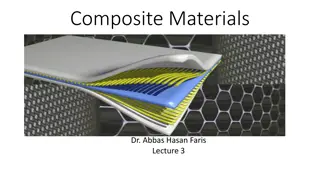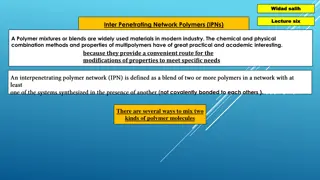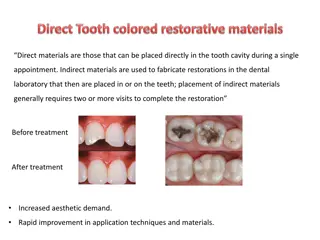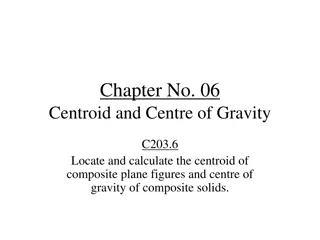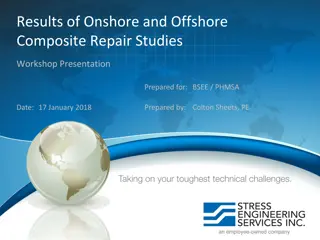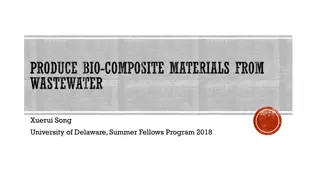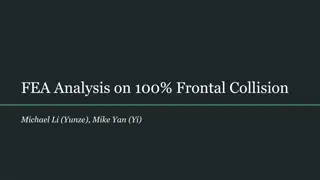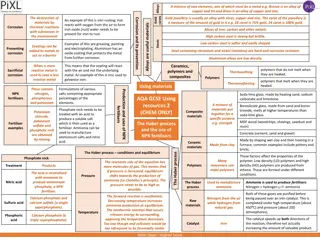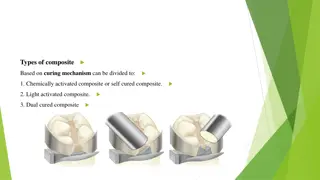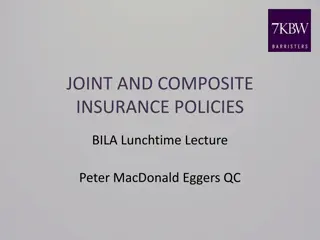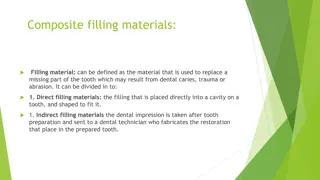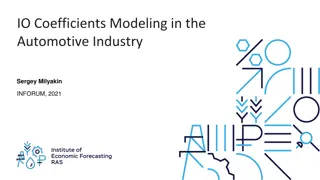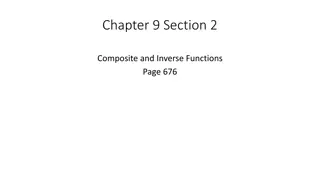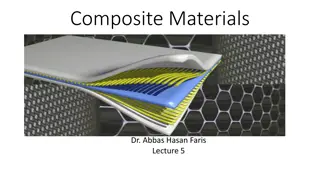Exploring Smart and Composite Materials in Modern Technology
The content delves into the realm of smart and composite materials, highlighting modern advancements and applications such as shape-memory alloys, nanomaterials, photochromic glass, temperature-responsive polymers, and more. It discusses the advantages, disadvantages, and examples of composites like concrete, plywood, reinforced polymers, and robotic materials. Key terms like compressive strength, tensile strength, and benefits of composite materials are also explored, providing insights into the fascinating world of material science.
Download Presentation

Please find below an Image/Link to download the presentation.
The content on the website is provided AS IS for your information and personal use only. It may not be sold, licensed, or shared on other websites without obtaining consent from the author. Download presentation by click this link. If you encounter any issues during the download, it is possible that the publisher has removed the file from their server.
E N D
Presentation Transcript
Core Knowledge 1.4 Smart and composite materials, and technical textiles Name: Group: Teacher:
1.4 Smart and composite materials, and technical textiles Pages 19-24 Modern material Vs Smart materials Modern Smart Material Description Application Advantages Disadvantages Shape-memory alloys (SMAs) Nanomaterials
1.4 Smart and composite materials, and technical textiles Pages 19-24 Modern material Vs Smart materials Material Description Application Advantages Disadvantages Photochromic glass Reactive Glass Piezoelectric materials
1.4 Smart and composite materials, and technical textiles Pages 19-24 Modern material Vs Smart materials Material Description Application Advantages Disadvantages Temperature- responsive polymers e.g. poly Nisopropylacrylamide (PNIPAM) Conductive inks
1.4 Smart and composite materials, and technical textiles Pages 19-24 Composites What is a composite? _________________________________________________________________________________________________________________ What are the advantages of most composites? _________________________________________________________________________________________________________________ Composite Description Examples Disadvantages Concrete Plywood
1.4 Smart and composite materials, and technical textiles Pages 19-24 Composite Description Examples Disadvantages Fibre/carbon/glass Reinforced polymers Robotic Materials
1.4 Smart and composite materials, and technical textiles Pages 19-24 Key terms: Compressive strength: Tensile strength: Veneers: Plywood Benefits of composite materials: Concrete Fibre/carbon/glass Name:______________________ Year 10 Core Knowledge
1.4 Smart and composite materials, and technical textiles Benefits of composite materials: Pages 19-24 Robotic materials Reinforced polymers Sketch a use for plywood that you found below using a recognised drawing technique. Remember to render your product: Apply it: Find three uses for plywood. 1. 2. 3. Why do you think it has been used for these purposes? Name:______________________ Year 10 Core Knowledge
1.4 Smart and composite materials, and technical textiles Pages 19-24 Technical textiles Why are these developed? What are the general advantages of them? Material Description Examples Advantages Disadvantages Agrotextiles Construction textiles
1.4 Smart and composite materials, and technical textiles Pages 19-24 Material Description Examples Advantages Disadvantages Geotextiles Domestic textiles Environmentally friendly textiles
1.4 Smart and composite materials, and technical textiles Pages 19-24 Material Description Examples Advantages Disadvantages Protective textiles Sports textiles Apply it: Why would you want to use a memory foam or a wipe clean surface fabric at home? Explain one benefit of using environmentally friendly textiles to make a pair of school trousers? (2 marks)




